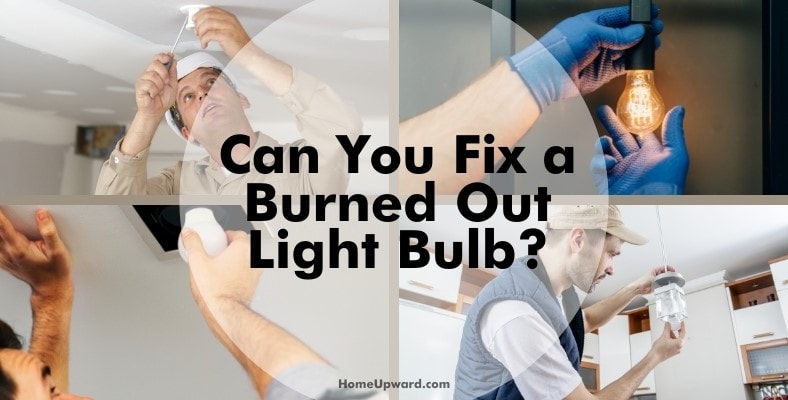Yeah, it’s a great question – is it possible for a supposedly burned out and dead light bulb to start a fire? Keep reading – what you learn may surprise you!
Contents
Can a Burned Out Light Bulb Cause a Fire?
A burned-out light bulb, in and of itself, does not present a fire risk. An article was written for Fire Engineering in 1952 that states in the headline that a burnt-out light bulb was responsible for starting a fire in a Los Angeles basement.
However, although what this headline states is technically correct, the wording is a little misleading.
You see, the accident in question was actually caused by the bulb overheating while in contact with a wooden surface (and surrounded by extremely flammable substances, as the basement was situated below a paint shop).
After 8 hours of contact with the wood, the excess heat from the bulb set the surface on fire. The heat generated by the fire eventually caused the bulb to burn itself out.
So, while the bulb (which was burnt out when police officers found it) was responsible for the fire, the fire was not started when the bulb was in its burnt-out state. The bulb only burnt out after the wood had begun to catch fire as a result of the heat.
What this event does tell us, however, is that an overheated light bulb can cause a fire. While the process of overheating is likely to cause a bulb to burn out, a bulb that has already burnt out will not cause a fire.
The reason a burnt-out bulb cannot present a fire hazard is that it cannot consume electricity because the filament in the bulb is no longer intact. This is the main reason why it is safer to leave a burnt-out light bulb in place than leave the socket empty.
Many concerned homeowners remove burnt-out lightbulbs from their sockets as soon as possible out of fear that they might cause a fire or present other electrical dangers. However, this is actually more dangerous than leaving the bulb where it is until you can find a replacement.
Any dust, dirt, insects, or contaminants that get into an empty light bulb socket can create an uncontrolled spark of electricity, which can easily cause a fire. Therefore, it’s much safer to leave a burnt-out bulb in a light fixture than to leave the empty socket exposed.
Why Do My LED Lights Burn Out So Fast?
If you use LED lights in your home and have used other types of light bulbs in the past, you may have noticed that your LED bulbs tend to burn out faster than others.
This isn’t actually because LED light bulbs don’t last as long as other bulbs, but because LED bulbs require certain conditions in order to reach their full potential lifespan.
Firstly, LED lights do not burn a hot filament to create light like other types of bulbs. To clarify, this doesn’t mean that LED bulbs don’t generate any heat, but that they don’t rely on the heat for light generation. The downside of this is that LED lights can easily overheat if the voltage in your home is too high.
If you have noticed that your LED lights burn very brightly and burn out very quickly, it is likely that they are being exposed to an overly high voltage.
Another reason why your LED lights might burn out too quickly is that your connections are either loose or exposed to a lot of vibration. Any disturbance of your bulb connections can agitate the filament, causing burnout.
Alternatively, you might simply be using the wrong type of bulb for your fixtures. If you are using high-wattage LED bulbs, it could be that the power rating is just too high for your fixtures. You can either replace the bulb in this case or have your fixtures replaced by an electrician if you want to continue using more powerful bulbs.
If your fixtures are recessed, it’s also possible that the insulation from the fixture housings is causing the bulbs to overheat and burn out.
Can You Fix a Burned Out Light Bulb?
Did you know that you can actually fix a burnt-out light bulb yourself without having to buy a replacement? Make sure that your light switches are turned off and remove the bulb from its socket. Looking through the glass of the bulb, you should be able to tell if the filament is broken.
Carefully, roll the base of the light bulb between the palms of your hands. This will agitate the broken pieces of filament, which can help them to make contact with one another again.
Please note that this won’t work with a frosted bulb that you can’t see through or if the pieces of filament have coiled onto themselves.




